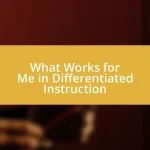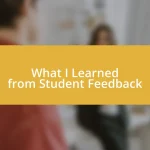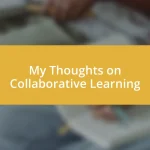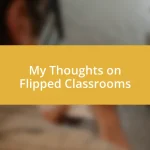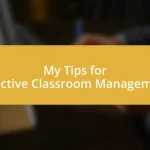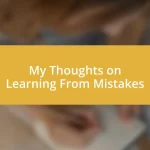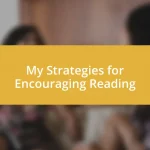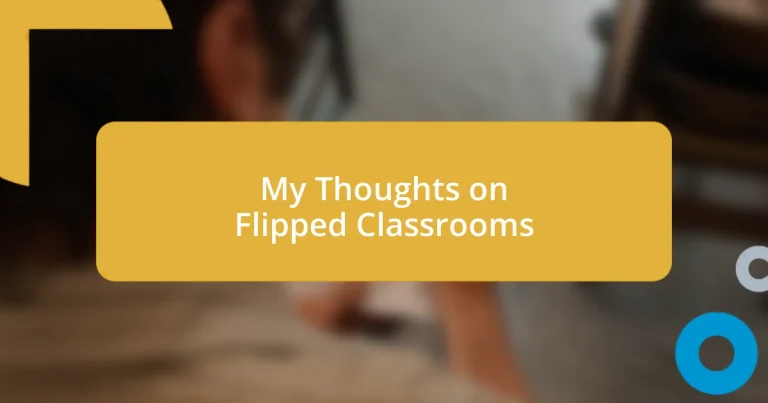Key takeaways:
- Flipped classrooms transform the learning experience by empowering students to learn at their own pace, fostering deeper understanding and engagement during class discussions.
- While the model enhances collaboration and social skills, it also presents challenges such as technological access and the need for robust support systems for students adapting to new responsibilities.
- Measuring success in flipped classrooms involves evaluating increased student engagement, improved assessment scores, and positive feedback on personalized learning experiences.
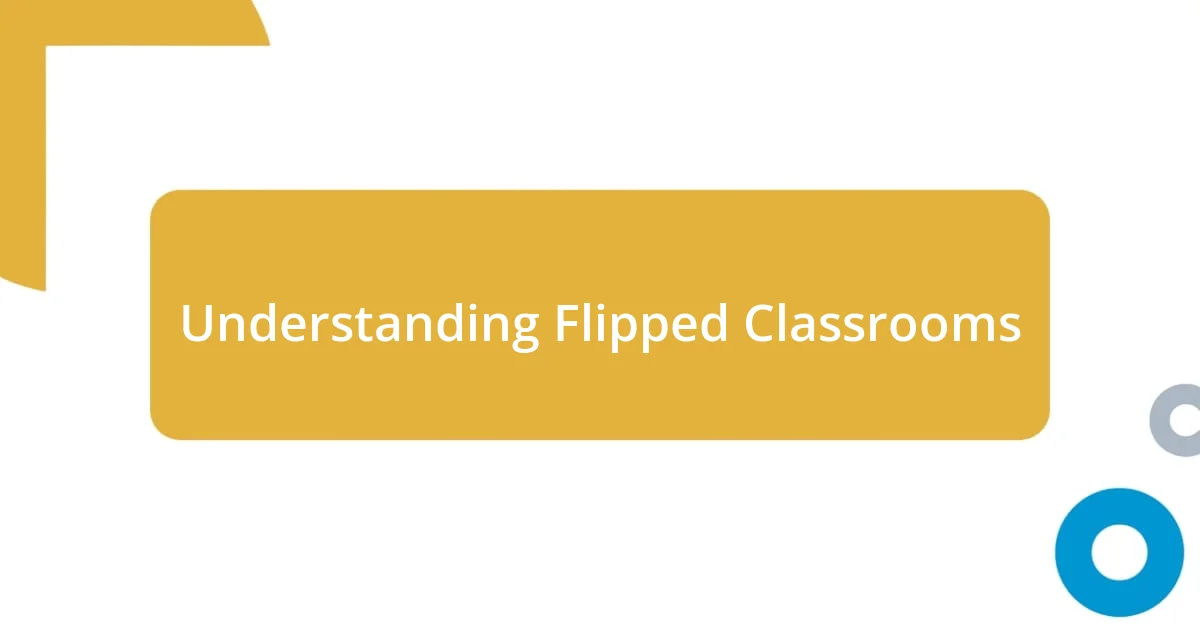
Understanding Flipped Classrooms
Flipped classrooms fundamentally change the way we engage with learning. Instead of the traditional model where teachers deliver content during class time, students learn new material at home, often through videos or interactive modules, allowing class time to be dedicated to deeper discussions and hands-on activities. When I first encountered this model, I couldn’t help but wonder how it would change the dynamics between students and teachers, creating a richer, more collaborative experience.
In my experience, one of the most striking aspects of flipped classrooms is the way they empower students to take ownership of their learning. I recall a time when I struggled with a challenging subject in a traditional setup. Learning at my own pace through online resources would have been a game changer. The flipped model encourages students to pause, rewind, and absorb information more thoroughly before engaging in meaningful dialogue in class.
Additionally, flipped classrooms cater to diverse learning styles. For instance, I’ve seen students who typically shy away from speaking up blossom as they gain confidence through preparation at home. This method raises the question: how often do we miss potential contributions from quieter learners in a standard lecture format? By shifting focus to at-home learning, we create more space for these voices to emerge, ultimately enriching the classroom experience for everyone.
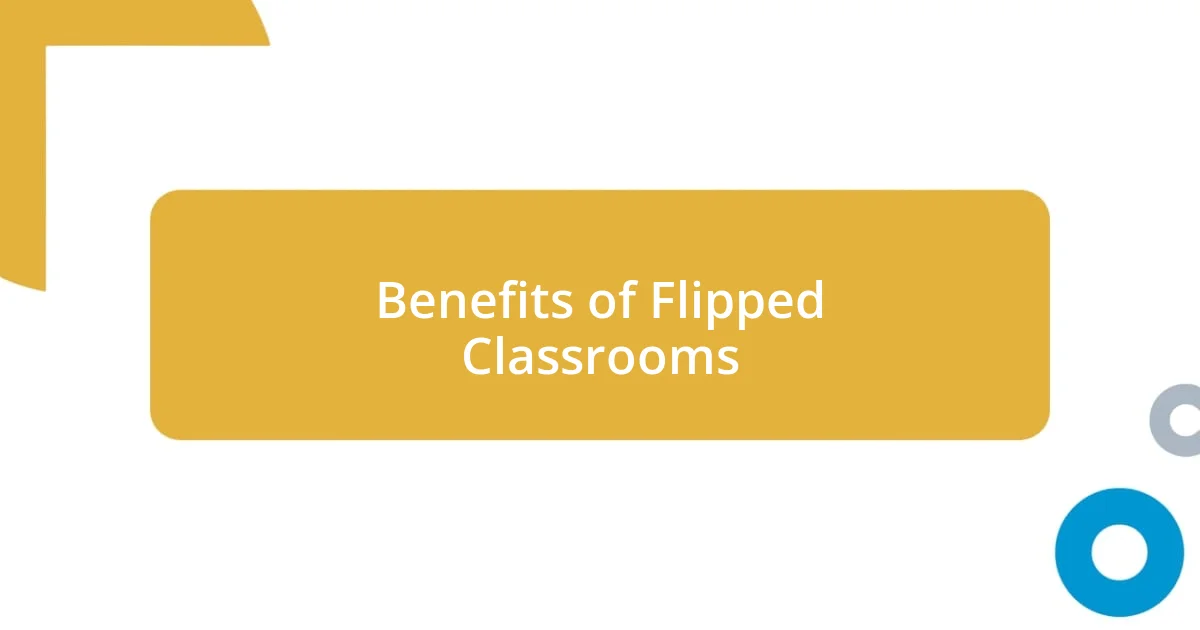
Benefits of Flipped Classrooms
Flipped classrooms offer a remarkable boost in student engagement. I vividly remember a calculus class where traditional lectures often left students disengaged and confused. When we shifted to a flipped model, students would come to class energized, ready to discuss problem-solving methods and tackle challenging exercises together. It transformed our atmosphere; the classroom felt less like a lecture hall and more like a lively workshop, where everyone was invested in the learning process.
One clear benefit of this model is the ability to cater time to individual needs. I’ve witnessed students thrive when they were allowed to learn at their own pace. For instance, a student who usually needed extra time grappling with new concepts flourished by reviewing lectures at home. This personalized pace not only built confidence but also resulted in deeper understanding, proving that when students are given agency, their learning experience becomes more meaningful.
Furthermore, the flipped classroom model significantly enhances collaboration among peers. During activities, I would observe students actively discussing their homework challenges, exchanging ideas, and finding solutions as a team. Their camaraderie grew stronger; it’s as if the classroom transformed into a community of learners, all willing to support one another through the learning journey. This collaborative spirit fostered not only academic success but also essential social skills that will benefit them long into the future.
| Benefit | Description |
|---|---|
| Increased Engagement | Students come to class prepared and eager to participate in discussions and activities. |
| Personalized Learning | Students can learn at their own pace, allowing for deeper comprehension. |
| Enhanced Collaboration | Students work together, improving social skills and mutual support. |
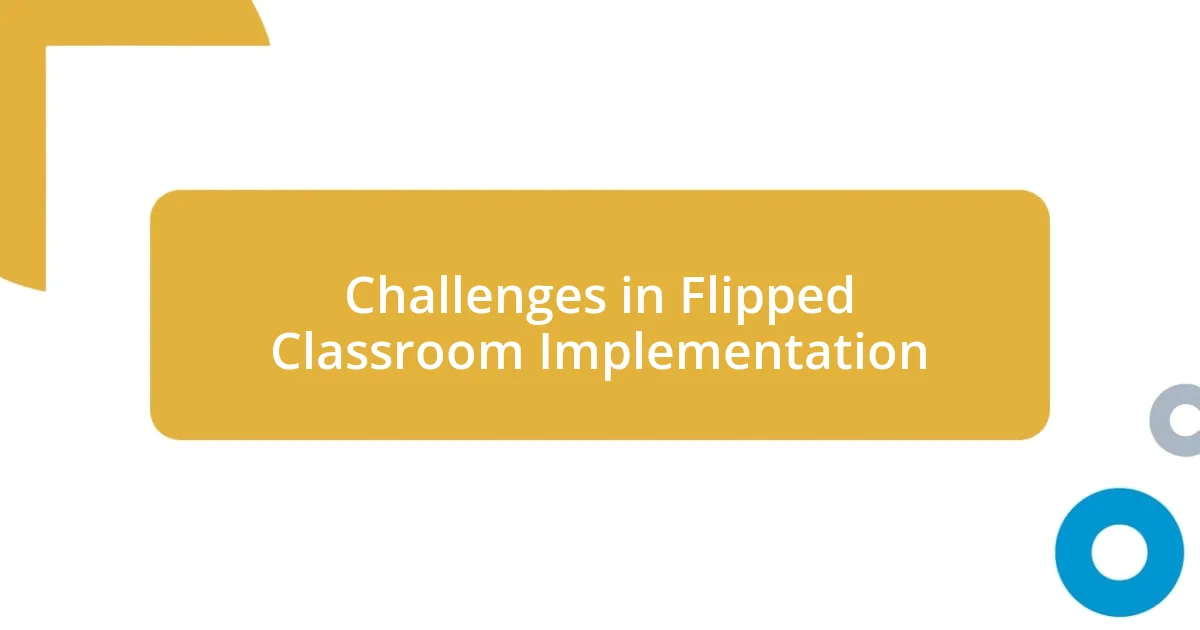
Challenges in Flipped Classroom Implementation
Implementing a flipped classroom model can come with its fair share of challenges, and I’ve witnessed this firsthand. Not every student is accustomed to taking responsibility for their learning, and this shift often requires a cultural change both in the classroom and at home. I remember a particular instance when one of my students expressed frustration about the new responsibilities. He felt overwhelmed by the expectation to engage with the material before class, leading to missed assignments and even disengagement. This scenario highlights the need for providing robust support systems for students who struggle to adapt.
There are a few key hurdles that can arise during flipped classroom implementation:
- Technological Barriers: Not all students have access to reliable technology or the internet at home, creating disparities in learning opportunities.
- Podcasts and Videos Limitations: The effectiveness of homework materials can vary, depending on how engaging or clear they are, which can impact retention.
- Parental Involvement: Students may need encouragement at home, yet not all parents are aware of how to support this interactive learning approach effectively.
- Assessment Challenges: Traditional assessment methods may not measure the deeper understanding promoted by flipped classrooms, necessitating new evaluation techniques.
- Teacher Preparedness: Teachers must invest extra time in creating quality materials and may require professional development to adjust their teaching styles.
Addressing these challenges is vital for the success of a flipped classroom. When I reflect on these obstacles, I realize that successful implementation isn’t just about changing how content is delivered; it’s about fostering a supportive environment where both students and educators feel confident navigating this new landscape.
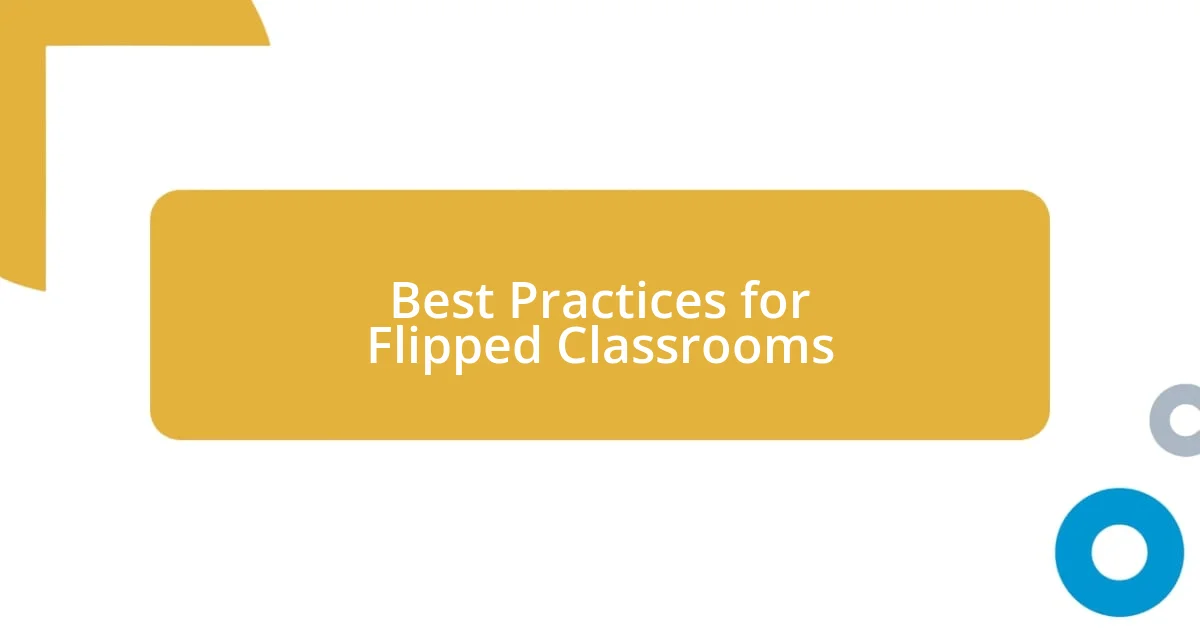
Best Practices for Flipped Classrooms
When it comes to best practices for flipped classrooms, I believe setting clear expectations is crucial. Early on in my experience, I saw the difference when I established transparent guidelines for how students should prepare. For example, I outlined specific video lengths and key concepts to focus on beforehand. This approach not only clarified their responsibilities but also eased some of the anxiety students felt about the new format. Have you ever noticed how a little direction can transform uncertainty into confidence? It’s remarkable.
Another powerful practice is utilizing formative assessments to gauge understanding continuously. I recall implementing quick polls and quizzes after students had watched their lectures at home. This not only held them accountable but also allowed me to adjust my lesson plans based on their grasp of the material. When I introduced this method, I could see students light up when they realized they were on the right track. It reinforced the idea that learning isn’t just a one-way street; it’s about dialogue and feedback.
Finally, fostering a sense of community within the classroom cannot be overstated. I vividly remember structuring activities that encouraged peer-to-peer teaching. For instance, I would pair students who had mastered concepts with those still struggling. This not only helped the latter to catch up but also built confidence in the former as they became leaders in their learning journey. Don’t you think there’s something incredibly rewarding about collaborative growth? It truly deepens understanding and makes the classroom a welcoming space for every learner.
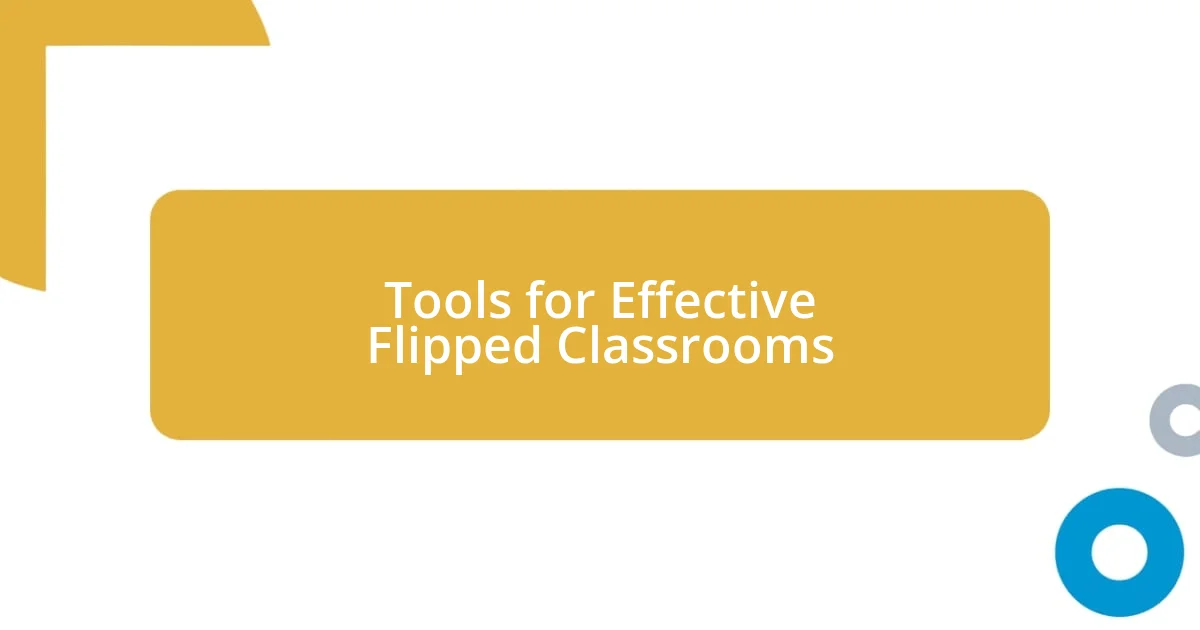
Tools for Effective Flipped Classrooms
Creating an effective flipped classroom hinges on the right tools, and I’ve found various technologies that make a real difference. For instance, one platform that truly transformed my teaching was Edpuzzle. By embedding questions into videos, I could ensure that students didn’t just passively watch but engaged critically with the content. I remember the first time I used it; several students expressed their surprise at how much more they retained simply because they had to think actively during the video. Isn’t it amazing how a little interactive element can spark curiosity?
Another tool that has proven invaluable is Google Classroom. This platform not only streamlines the distribution of assignments but also fosters collaboration among students. I used to spend a lot of time managing paperwork, but now, everything is organized in one place. During a project, I saw my students use the discussion feature to help each other brainstorm ideas, which made me realize just how vital peer feedback is in this environment. Have you ever considered how powerful technology can be in building a sense of community?
Lastly, incorporating response systems like Kahoot! or Poll Everywhere can inject energy into follow-up activities. After a few weeks of using these tools, I noticed that my students were much more willing to participate and share their thoughts. The adrenaline rush during a quiz turned what could have been mundane reviews into lively discussions. There’s something about that instant feedback that captivates them, don’t you think? It keeps the momentum going and reaffirms their understanding, which is essential in a flipped classroom setting.
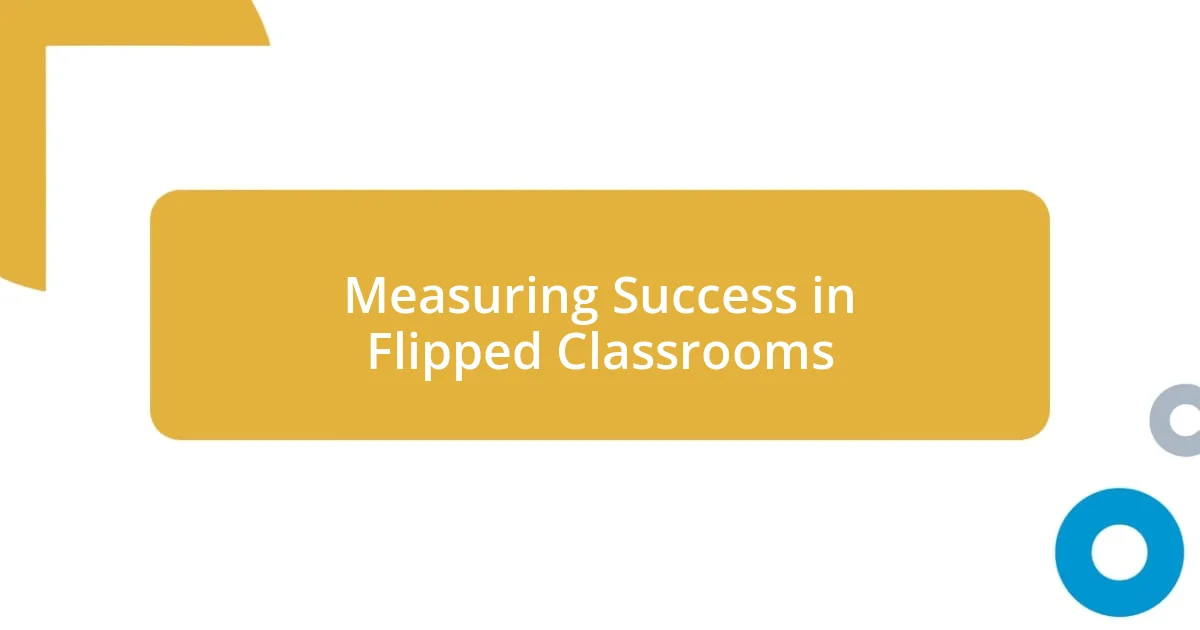
Measuring Success in Flipped Classrooms
Measuring success in flipped classrooms can be quite enlightening. I remember my first year implementing this model; I was eager to see results. One of the most telling indicators was students’ engagement levels. After introducing the flipped format, I could literally feel the buzz in the room. Hands were flying up during discussions, and it was evident they felt invested in their learning. Isn’t it fascinating how enthusiasm can be such a strong indicator of success?
Another metric that I found valuable was student performance on assessments. Initially, I was apprehensive about how well they would do, considering the shift in teaching style. However, as I tracked their progress, I was pleasantly surprised. My students showed marked improvement in their scores, especially in collaborative projects. It made me wonder: could this increase in performance be a byproduct of their active participation and self-directed learning? From my perspective, it certainly seemed like it.
Finally, student feedback provided vital insights into the effectiveness of flipped classrooms. I often gathered informal reflections through exit tickets and found that many students appreciated the opportunity to learn at their own pace. Some described it as liberating, while others valued the chance to dive deeper into topics they were passionate about. This latter point resonates deeply with me. Doesn’t it make sense that when students feel in control of their learning journey, they become more engaged? Seeing their enthusiasm was a clear sign that we were on the right track.
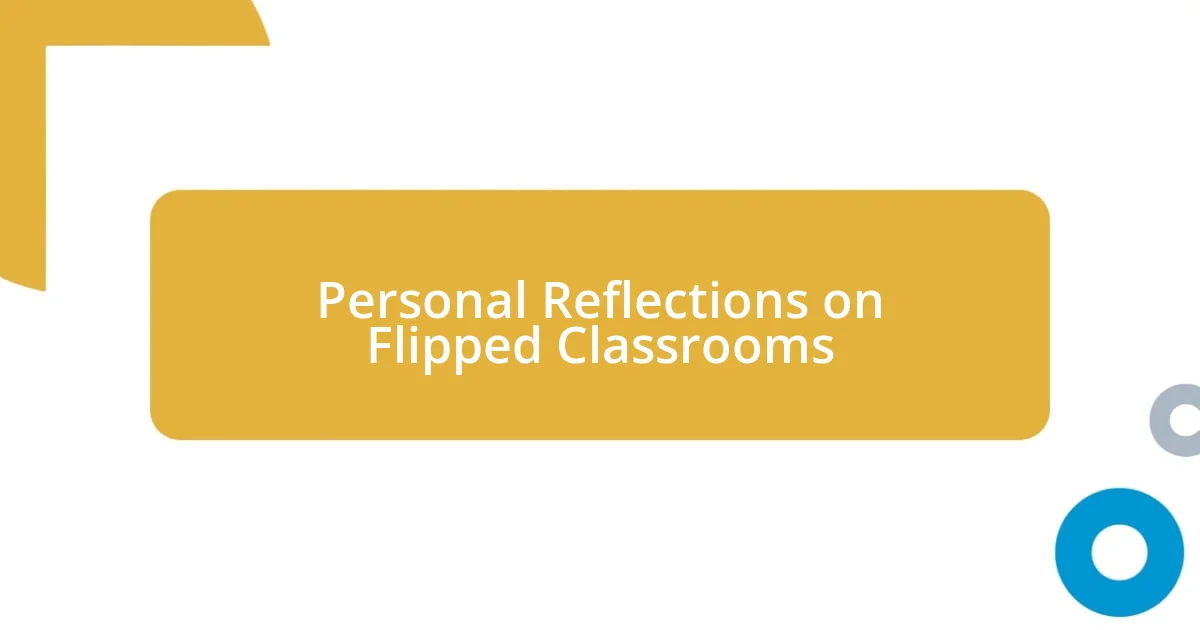
Personal Reflections on Flipped Classrooms
Reflecting on my experiences with flipped classrooms brings back a mix of excitement and curiosity. I vividly remember a moment when I walked into my classroom after a flipped lesson. The buzzing chatter was a stark contrast to the usual silence I’d experienced before. Students were not just discussing the content; they were passionately debating different perspectives. It struck me then how a simple shift in approach could ignite such energy. Have you ever felt that thrill when students take ownership of their learning?
As I navigated through this teaching model, I learned to appreciate the social dynamics at play. One intriguing aspect was observing how students who were usually quiet came alive during group discussions. I recall a student named Jake, who often hid in the background but transformed into a leader during collaborative activities. Seeing him confidently guide his peers through complex concepts was a revelation for me. It made me wonder how many more hidden talents are waiting to be uncovered in our classrooms.
What truly resonates with me are the moments of genuine connection that developed between students. One day, after an engaging video lecture, I noticed a group gathered at the back of the room sharing their insights over lunch. Their camaraderie made me realize that the flipped classroom wasn’t just about academics; it was about building relationships. Isn’t that the essence of education? In these moments, I understood that successful learning environments thrive not just on knowledge but on collaboration and community.


